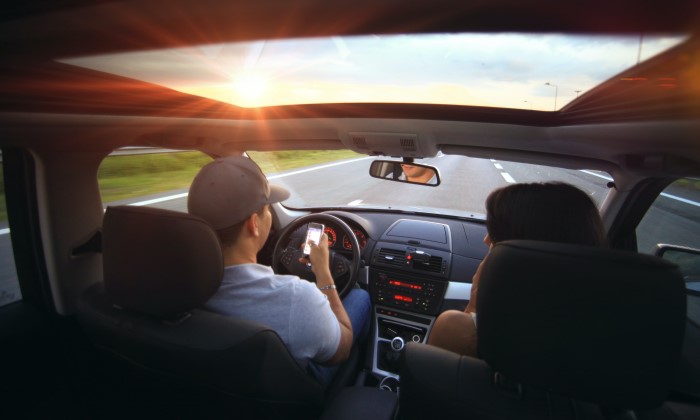Introduction
Distracted driving has become an alarming issue in today’s fast-paced world. Defined as any activity that diverts attention from driving, distracted driving significantly increases the risk of accidents, especially those involving pedestrians. This article explores the profound impact of distracted driving on pedestrian accident rates and discusses the importance of holding drivers accountable for their actions.
Types of Distracted Driving
Distracted driving can be categorized into three main types: visual, manual, and cognitive.
Visual Distraction
Visual distractions occur when drivers take their eyes off the road. Examples include looking at a GPS device, reading a text message, or even glancing at scenery outside the vehicle. Such distractions can prevent drivers from noticing pedestrians crossing the street, leading to potential accidents.
Manual Distraction
Manual distractions involve taking one’s hands off the wheel. This can happen when drivers are eating, drinking, or adjusting the radio. Any activity that requires physical manipulation while driving can hinder the ability to react quickly to sudden changes, such as a pedestrian stepping into a crosswalk.
Cognitive Distraction
Cognitive distractions occur when a driver’s mind is not focused on driving. Daydreaming, engaging in deep conversations, or feeling stressed or emotional can distract a driver mentally. Even with their eyes on the road and hands on the wheel, a cognitively distracted driver may not process critical information effectively, increasing the risk of hitting pedestrians.
Symptoms and Signs of Distracted Driving
Identifying distracted driving can be challenging but recognizing common behaviors can help.
Common Behaviors of Distracted Drivers
Distracted drivers often exhibit behaviors such as erratic lane changes, inconsistent speeds, and delayed reactions at traffic signals. They may also fail to observe traffic signs or ignore pedestrian crossings.
Signs for Pedestrians to Watch For
Pedestrians should stay alert for drivers who appear inattentive, such as those who are looking down at their laps or continuously adjusting their in-car controls. Noticing these signs can help pedestrians take preventive actions.
Impact on Reaction Times and Driving Performance
Distracted driving significantly impairs reaction times. Studies show that distracted drivers take longer to respond to unexpected events, increasing the likelihood of accidents. This delay can be fatal when it involves pedestrians who may not have the protection that vehicle occupants do.
Causes and Risk Factors
Several factors contribute to distracted driving, each presenting unique challenges and requiring targeted interventions.
Mobile Phone Usage
The most common and dangerous form of distracted driving involves mobile phones. Texting, calling, or using apps while driving distracts drivers visually, manually, and cognitively. Laws banning phone usage while driving are in place in many regions, but enforcement and compliance remain issues.
In-car Technologies
Modern vehicles come equipped with various technologies, such as GPS systems and infotainment centers, which can be both beneficial and distracting. Using these systems while driving can divert attention away from the road.
Eating and Drinking
Eating and drinking while driving may seem harmless, but they require taking one or both hands off the wheel, increasing the risk of losing control of the vehicle.
Emotional Distractions
Emotional states such as stress, anger, or excitement can distract drivers cognitively. Emotional distractions can cause drivers to focus inwardly rather than on their driving environment, which can lead to accidents.
Fatigue
Driving while fatigued is a significant risk factor. Fatigue impairs cognitive function, slows reaction times, and can lead to microsleeps—brief moments of sleep that occur while driving.
Environmental Factors
External factors such as billboards, roadside activities, and other accidents can also distract drivers. Maintaining focus amid these distractions is crucial for road safety.
Diagnosis and Tests
Detecting distracted driving is essential for reducing its impact on pedestrian accident rates.
Identifying Distracted Driving in Accident Reports
Accident reports often include witness statements, driver testimonies, and evidence from the scene. Identifying signs of distraction in these reports can help in understanding the role of distracted driving in accidents.
Law Enforcement Techniques
Law enforcement officers use various techniques to detect distracted driving, including observation and the use of unmarked vehicles to spot offenders. Traffic cameras and other surveillance technologies also aid in this effort.
Use of Technology in Detecting Distracted Driving
Advanced technologies such as machine learning algorithms and artificial intelligence are being developed to detect distracted driving. These technologies can analyze driver behavior in real-time and provide alerts to prevent accidents.
Treatment Options for Reducing Distracted Driving
Reducing distracted driving requires a multifaceted approach, combining legislation, public awareness, technology, and behavioral interventions.
Legislative Measures
Strict laws against distracted driving, including hefty fines and penalties, can deter drivers from engaging in distracting activities. Consistent enforcement of these laws is crucial for their effectiveness.
Public Awareness Campaigns
Public awareness campaigns educate drivers about the dangers of distracted driving. These campaigns use various media platforms to reach a wide audience and encourage safer driving behaviors.
Technological Interventions
Technologies such as hands-free devices, apps that block phone usage while driving, and advanced driver-assistance systems (ADAS) can help mitigate the risks associated with distracted driving.
Behavioral Therapy and Education Programs
Behavioral therapy and education programs aim to change driving habits. These programs can be particularly effective for repeat offenders, helping them understand the risks and develop safer driving practices.
Preventive Measures
Both drivers and pedestrians can take steps to reduce the risk of accidents caused by distracted driving.
Tips for Drivers to Avoid Distractions
Drivers should make a conscious effort to minimize distractions by:
- Setting up GPS and music before starting the journey
- Using hands-free devices for calls
- Avoiding eating or drinking while driving
- Taking breaks if feeling fatigued or emotional
Strategies for Pedestrians to Stay Safe
Pedestrians can enhance their safety by:
- Using crosswalks and obeying traffic signals
- Making eye contact with drivers before crossing
- Staying alert and avoiding distractions such as mobile phones while walking
Role of Vehicle Manufacturers
Vehicle manufacturers can contribute by designing cars with safety features that minimize distractions, such as intuitive controls and driver-assistance systems that keep drivers focused.
Personal Stories or Case Studies
Real-life stories illustrate the severe consequences of distracted driving and highlight the importance of preventive measures.
Real-life Incidents of Distracted Driving Leading to Pedestrian Accidents
Numerous tragic incidents highlight the dangers of distracted driving. For instance, a driver texting while driving might miss a pedestrian crossing the road, leading to fatal consequences. Sharing these stories can emphasize the real-world impact of distracted driving.
Testimonies from Victims and Their Families
Hearing from victims and their families can provide a powerful reminder of the human cost of distracted driving. Their testimonies often underscore the need for stricter laws and better public awareness.
Successful Implementation of Preventive Measures
Case studies of cities or countries that have successfully implemented measures to reduce distracted driving can serve as models for others. These examples show that with the right strategies, significant reductions in distracted driving incidents are possible.
Expert Insights
Experts from various fields offer valuable insights into addressing distracted driving.
Quotes from Traffic Safety Experts
Traffic safety experts can provide data-driven insights and recommendations for reducing distracted driving. Their expertise helps shape effective policies and interventions.
Insights from Law Enforcement Officers
Law enforcement officers share their experiences and challenges in detecting and penalizing distracted drivers. Their perspectives highlight the practical aspects of enforcing distracted driving laws.
Perspectives from Healthcare Professionals
Healthcare professionals see firsthand the injuries and fatalities resulting from distracted driving. Their insights emphasize the importance of prevention and the long-term impact on victims and their families.
Conclusion
In summary, distracted driving poses a significant threat to pedestrian safety. Addressing this issue requires a combination of strict laws, public awareness, technological advancements, and behavioral changes. By holding drivers accountable and implementing effective preventive measures, we can reduce the incidence of pedestrian accidents caused by distracted driving. Everyone has a role to play in making our roads safer—drivers, pedestrians, policymakers, and vehicle manufacturers alike.

